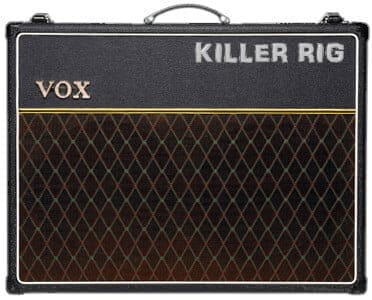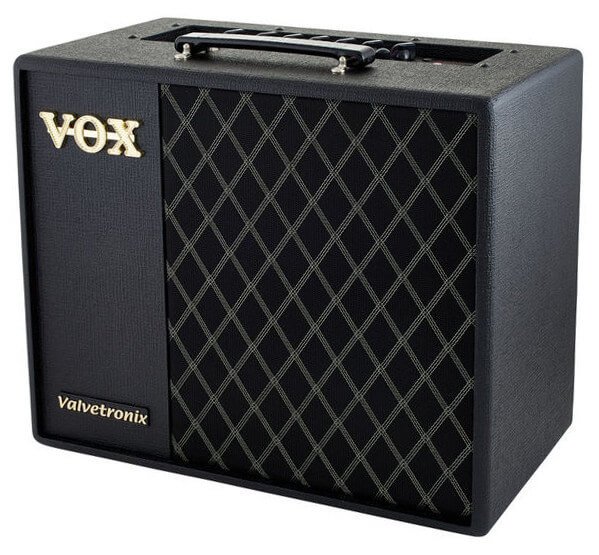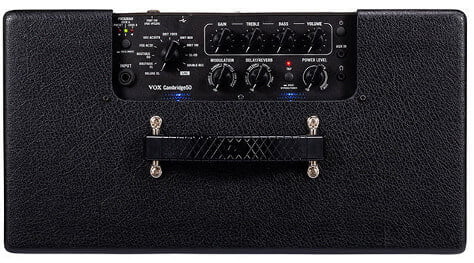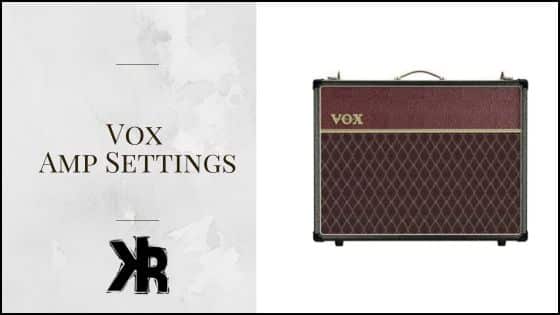Table of Contents
Vox Amp Settings are essential for musicians who want to make the most of their instrument. Each knob and switch plays a role in shaping the tone, from gain and volume to treble and bass controls.
Vox amplifiers have been a cornerstone in the world of music, shaping the sound of legendary bands like U2 and The Beatles for decades.
This Killer Rig guide will take you on a journey through the intricacies. Whether you’re looking to recreate the classic British rock tone or explore new sonic landscapes, this is your roadmap to unlocking the full potential of your Vox amp.
Overview of Vox Amplifiers
Vox amplifiers are legendary in the world of music. They are known for their excellent sound and iconic design. Many well known musicians have used them in their performances.
Quality and versatility make Vox amps a popular choice amongst professionals and amateurs.
- Vox amps have tube-driven circuitry, giving out warm and rich tones.
- Their control layout lets musicians easily adjust their sound.
- Vox amps come in a range of models with different power outputs. So, it’s easy to find the right amp for any musician.
- Moreover, they are reliable and durable.
Vox has an illustrious history. Thomas Walter Jennings founded Vox in the 1950s. It quickly became popular in Britain during the rock ‘n’ roll era. The Beatles used them in their early career, cementing its status as a symbol of musical innovation.

Understanding Dial and Knob Functions
It’s important to know the different functions of dials and knobs to use your Vox amplifier to its full potential. Each control provides a specific effect on your tone and sound. Here is an overview of the common controls and their purpose:
- Gain – Changes the preamp gain, determining the amount of distortion.
- Volume – Sets the output volume.
- Treble – Adjusts the high-frequency content.
- Bass – Controls the low-frequency response.
- Middle – Determines the mid-range frequencies.
- Reverb – Adds ambience with an echoing effect.
Note that other Vox models may have extra features. This can include presence, tone cut, tremolo and a range of different EQ switches. You will also find that some Vox amps have different channels, which also add extra knobs to the user interface.
A few years ago, at a gig, I tried an old Vox AC30. As soon as I strummed the first chord, the perfect combination of gain and volume created a great overdriven tone.
The treble and bass knobs dialed in a lush sound. Our performance was amazing, and the audience was mesmerized by the mix of vintage tone and modern energy.
Unlock your Vox amplifier’s potential by experimenting with the settings. Use your creativity and let the possibilities behind the dials unfold.

Specific Models and Their Controls
Vox amplifiers are not just a single monolithic design. They come in a variety of models, each with its own set of controls and features.
From the iconic AC30, known for its rich and jangly tone, to the versatile AD100VT with its wide array of built-in effects, Vox offers something for every musician.
Understanding the specific controls of different Vox models can help you dial in the perfect tone. Here’s a closer look at some of the standout models in the Vox lineup:
AC30
A classic that has been used by countless legends, the Vox AC30 is known for its chime and jangle. It features:
- Normal and Top Boost Channels: Allows for a variety of tones.
- Tremolo and Reverb Effects: Adds depth and movement to the sound.
- Cut Control: Helps shape the high-frequency response.
AC15
A smaller sibling, the AC15 provides a similar tone but with less power. It includes:
- Tone Cut Control: Shapes the overall tone.
- Tremolo Speed and Depth Controls: For creating pulsating effects.
- External Speaker Output: Connect to an external speaker for different sound characteristics.
AC4
Perfect for practice and small gigs, the AC4 offers a simple control layout:
- Gain Control: Adjusts the level of distortion.
- Bass and Treble Controls: Basic EQ shaping.
- Volume Control: Sets the overall output level.
AD100VT
A versatile modeling amp, the AD100VT includes:
- 11 Amp Models: Emulates different classic amp sounds.
- 11 Pedal Effects: Built-in effects like chorus, flanger, and phaser.
- 2 Channels: Allows for easy switching between clean and distorted tones.
Pathfinder 10
An affordable practice amp, the Pathfinder 10 features:
- Clean/Overdrive Switch: Switch between clean and distorted tones.
- Bass and Treble Controls: Basic tone shaping.
- Headphone Output: Practice without disturbing others.

Vox Amp Settings for Different Music Genres
Each music genre needs specific amp settings to achieve the desired tone. To get the sound you’re aiming for, I made a table with the recommended Vox amp settings. This table will help you dial in the perfect sound for your music genre:
| Genre | Gain | Bass | Middle | Treble | Reverb |
|---|---|---|---|---|---|
| Blues | 4 | 5 | 4 | 6 | Low |
| Rock | 7 | 6 | 5 | 7 | Medium |
| Jazz | 4 | 5 | 7 | 5 | High |
| Metal | 8 | 7 | 5 | 7 | Medium |
| Country | 5 | 7 | 6 | 8 | Low |
Feel free to change these settings and make them fit your style and taste. You will find that some Vox models do not have a middle control. This is preset in the circuitry and can be ignored.
Plus, there are lots of sub-genres that might need specific adjustments. Trust your ears and adjust the settings until you get the result you want.
Finding your sound is a journey. Don’t be scared to try different amp settings and discover new possibilities. Even small adjustments can make a big difference in your tone.
But just be aware that Vox amps are not perfect for all kinds of music. Metal, for example, is much harder to obtain on one than other options.
You may get a satisfactory sound, but it will be far from perfect. Blues and classic rock on the other hand, hard to beat a Vox!
Tips and Tricks for Fine-Tuning Vox Amp Settings
Here are a few tips to help find the perfect tone from your Vox amp:
- Tweak the EQ: Use the treble, middle, and bass knobs to adjust the frequencies and find the ideal balance.
- Add grit with the gain knob: Increase the gain for a more distorted sound. It’ll give your playing an extra edge.
- Utilize the effects: Reverb, delay, and chorus – explore these built-in features to add depth to your sound.
Plus, you can further enhance your tone with pedals. Overdrive, distortion, modulation – experiment with different combinations until you find what works.
Troubleshooting Common Issues
If you’re having troubles with your Vox amp settings, here are some solutions that can help you:
- Check the connections: Are they tightly plugged in? Loose cables can lead to bad sound and intermittent signal.
- See if the power source is good: Is the amp receiving enough power? If not, it could result in low volume or no sound.
- Tweak the EQ: Try different EQ settings for a balanced tone. Change the bass, mid, and treble controls until you reach your desired sound.
- Set the gain and volume levels properly: Wrong adjustment of these can cause weak signal or distortion. Find the right balance to prevent this.
- Inspect the speaker: Look for damage. Damaged speakers can affect the sound quality.
- Use an effects pedal: This can help counteract any undesirable characteristics of the amp. It lets you shape your sound further and increase your tonal range.
Pro Tip: Keep experimenting! Don’t hesitate to try new settings or get inspiration from other musicians. The more you explore with Vox amp settings, the more you’ll understand its power.
How Artists Use Vox Amps
Vox amplifiers have not only been the backbone of countless classic tracks but also the secret weapon of some of the most iconic guitarists in the history of rock and pop.
Let’s take a closer look at how these legends harnessed the power of Vox amps to create their signature sounds.
Brian May – Queen
The unmistakable sound of Queen’s lead guitarist, Brian May, is often attributed to his Vox AC30. May’s setup often included multiple AC30s, allowing him to achieve that rich, choral tone.
His use of the amp’s treble boost feature, combined with his homemade “Red Special” guitar, created a sound that’s as regal as rock royalty itself.
Song: “Bohemian Rhapsody”:
- Gain: 6
- Bass: 7
- Middle: 5
- Treble: 8
- Reverb: Low
The Edge – U2
The Edge’s chiming, echoing guitar sound is a defining feature of U2’s music. His love affair with the Vox AC30 has been a long one, using it to craft sounds that resonate with a sense of space and atmosphere.
By experimenting with delay effects and the amp’s natural sustain, The Edge turned his Vox into a sonic paintbrush.
Song: “Where the Streets Have No Name”:
- Gain: 4
- Bass: 5
- Middle: 6
- Treble: 7
- Reverb: High

John Lennon – The Beatles
The Beatles’ revolutionary sound was partly shaped by Vox amplifiers. John Lennon’s use of the Vox AC50 and AC100 helped create the jangly, clean tones that became synonymous with the British Invasion.
Songs like “Twist and Shout” and “A Hard Day’s Night” showcase the Vox amp’s ability to cut through the mix with clarity and punch.
Song: “A Hard Day’s Night”:
- Gain: 5
- Bass: 6
- Middle: 5
- Treble: 7
- Reverb: Medium
Tom Petty
Tom Petty’s clear and jangly rhythm guitar sound is another testament to the versatility of Vox amps.
His use of the Vox AC30, often in conjunction with Rickenbacker guitars, helped define a style that was both rootsy and fresh. It’s a sound that’s as timeless as Petty’s catalog of American anthems.
Song: “Free Fallin'”:
- Gain: 3
- Bass: 5
- Middle: 5
- Treble: 6
- Reverb: Low
Peter Buck – R.E.M.
Peter Buck’s arpeggiated style and the shimmering tones of R.E.M.’s early hits owe much to the Vox AC30.
Buck’s ability to blend jangle and grit helped create a new template for alternative rock, and the Vox amp was right there, adding color and character to his innovative playing.
Song: “Losing My Religion”:
- Gain: 4
- Bass: 5
- Middle: 6
- Treble: 7
- Reverb: Medium
Conclusion
Vox amplifiers have been the heartbeat of rock ‘n’ roll, jazz, blues, and countless other genres, resonating with musicians and audiences alike for generations.
This guide has journeyed through Vox’s legacy, unraveling the intricacies of its dials, knobs, and controls across various models.
But the true magic of Vox amplifiers lies not just in their technical specifications but in the hands and hearts of those who wield them. It’s in the experimentation, the fine-tuning, the connection between artist and instrument.
FAQs
How can I set up my Vox amp for a clean sound?
To achieve a clean sound on a Vox amp, set the gain control to a low or moderate level, adjust the volume knob to your desired loudness, and tweak the tone controls to achieve a balanced tone without excessive distortion.
What are some popular Vox amp settings for blues music?
For blues music on a Vox amp, many guitarists prefer to increase the gain slightly, set the bass and midrange controls to around halfway, and slightly boost the treble to give the sound a bit of bite and presence.
How can I achieve a classic British rock tone on my Vox amp?
To achieve a classic British rock tone, set the gain control to a moderately high level, increase the bass and treble knobs for added punch and high-end sparkle, and adjust the midrange control to your preference.
What Vox amp settings work well for an indie rock sound?
For a jangly indie rock sound, try setting the gain control low, set the bass and treble controls at a moderate level, and slightly boost the midrange. Experimenting with the reverb and delay effects can also add depth and ambiance to the sound.

